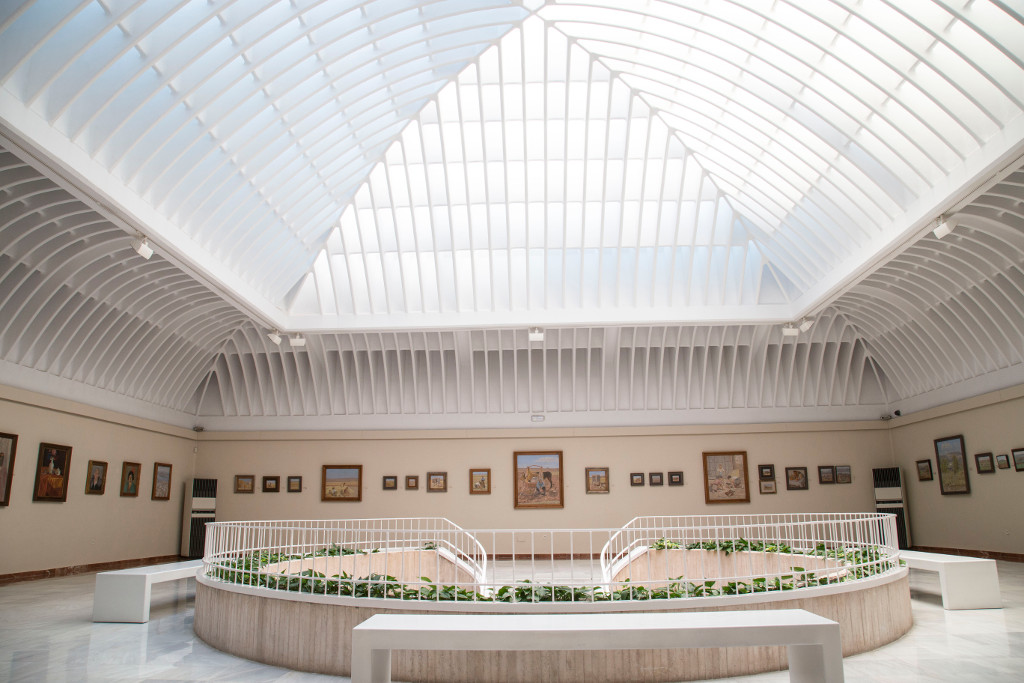Antonio López Torres devoted the most part of his life to represent the reality of his hometown, its people and its landscapes, and due to this big compromise he decided to donate his artwork to the city that witnessed his birth, Tomelloso.
As a sign of gratitude for the grand gesture made by the painter, Tomelloso City Council began the construction works of the future Antonio López
Torres Museum which would house the artwork left by the artist.
The collection exhibited in the museum nowadays was created in two donations: the first one was on 27th October 1978 and consisted of 19 oil paintings and 16 drawings, including iconic works such as Sleeping child (1970) or The cave (1924); whereas the second donation took place on 14th October 1983 and 28 oil paintings and 13 drawings were delivered, such as Alcalá Street (1970), Children in a stubble (1958) or Snowy bombo (1965).
Since 19th April 1986, when the López Torres Museum was inaugurated by the speech of the dramatist from Valdepeñas Francisco Nieva, the citizens and visitors of Tomelloso can contemplate and enjoy the artwork of this artist from La Mancha.
However, these are not the only works of the museum’s oils and drawings collection, since after the painter passed away many donations completed the existing permanent collection of 65 oil paintings and 41 drawings.
The museum has witnessed two of the most relevant exhibitions about the figure of the artist since it was opened:
The first exhibition was “Antonio López Torres in private collections”, celebrated from 8th May to 13th June 1993 and organised by the Tomelloso City Council in collaboration with the Cultural Property Service of the Ciudad Real Regional Council. This great exhibition added 94 new pieces from private collections to the museum’s permanent collection and sparked interest in the painter, as the public could contemplate almost all his works of art in this unique exhibition, 190 pieces in total.
In 2002 a retrospective touring exhibition was held to commemorate the centenary of the birth of the author gathering 132 artworks, half of them from the Antonio López Museum in Tomelloso. It was inaugurated the same year in the art centre Centro Cultural de la Villa in Madrid and was curated by the art historian María José Salazar, who was helped by other relevant specialists in this field such as Antonio Bonet Correa, María Teresa Cruz or the dramatist Francisco Nieva to write the catalogue.
In the presentation of this exhibition, the artist’s nephew Antonio López García said, “Contemplating a true artist is a fortune”. “(...) Having such a pure and generous man by my side, looking at his suffering, touching his creation closely have been the best things of my life, better than El Prado. The expression of light and the representation of the objective world are amazing.”
After Madrid, the retrospective exhibition travelled to Victorio Macho Museum in Toledo, to the art centre Centro Cultural de Caja Castilla-La Mancha in Albacete, to the Museum House Zavala in Cuenca, and finally, to the López Torres Museum in Tomelloso.

